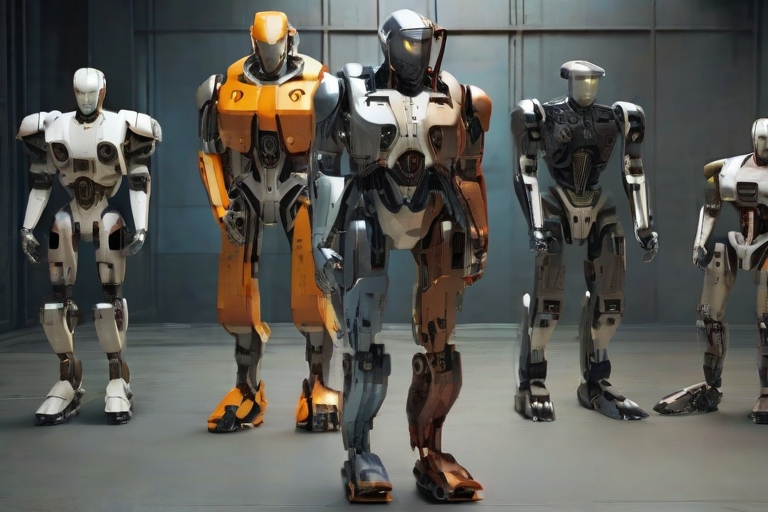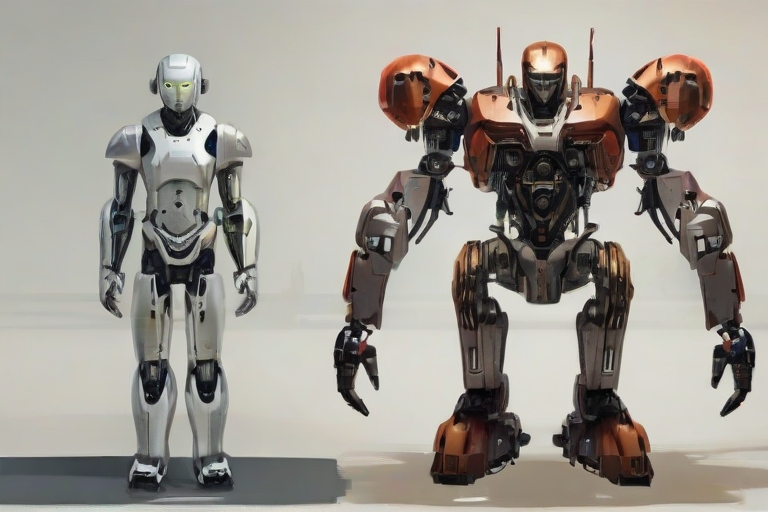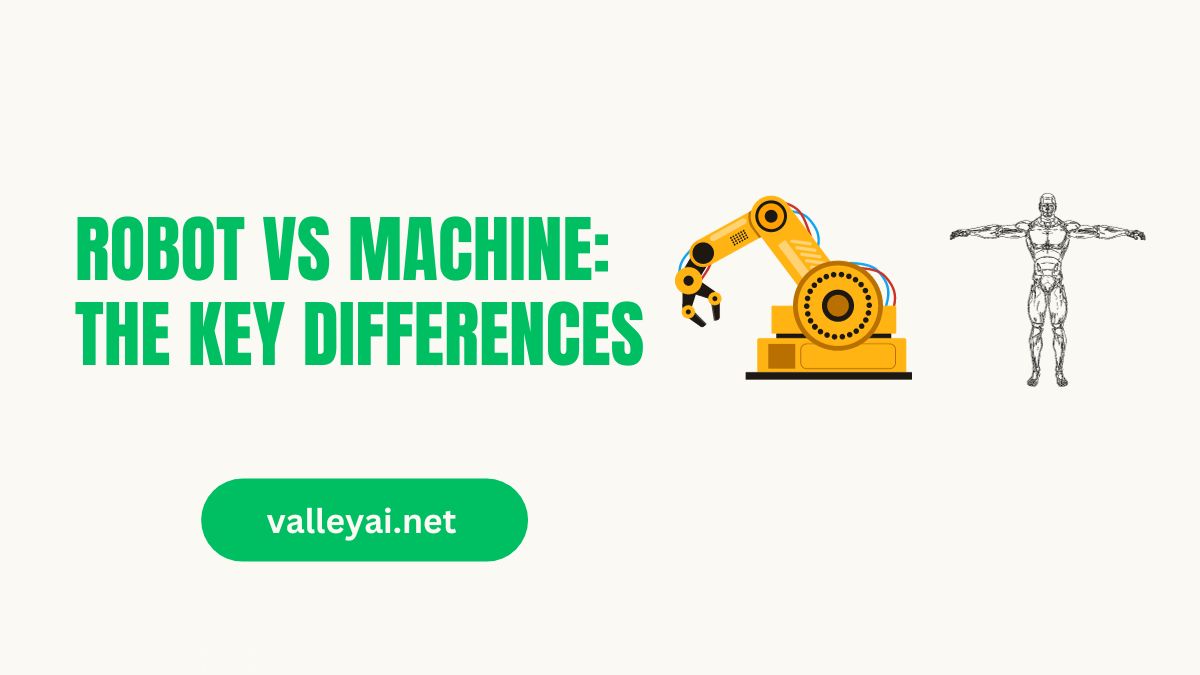Many people often get confused by the terms “robot” and “machine,” but understanding their difference is essential. A robot is an intelligent machine capable of autonomy, performing tasks without constant human control, while a machine is designed for a specific task and often requires energy sources and manual control.
For over a hundred years, sophisticated equipment like machinery has been helping people optimize the production game and improve the manufacturing process. Today’s technologies, including automation, mobile phones, and the internet, have had a significant impact on our lives.
By choosing the right resources and understanding the distinction, businesses can use these key pointers to discern and select the best option for advancing work and achieving better results. Knowing these tools makes you a more knowledgeable and informed user in this era of rapid technological development.
This article explores the nitty-gritty of these devices and their roles in daily lives.
The Basic Concept of Robots
A robot is a self-contained mechanism designed to handle complex tasks autonomously, without the need for human intervention. These robots come in various shapes and sizes, from small toys to massive factory machines capable of heavy lifting. Robots are often programmed to perform specific activities such as assembling cars, exploring space, or even cooking food. Unlike standard machines, robots interact with the real world by perceiving their surroundings, making calculations, and performing judgments to adapt as needed.
Some robots can walk on two legs or more, while others fly or assist in precise work, like helping surgeons during delicate surgery on the human body. In industries, factory robot arms handle tasks like CNC machine tending, proving their efficiency in filthy industries and beyond. Their ability to reach far, carry heavy payloads, and adjust to specific business needs has made robots indispensable in today’s world.
Industrial Robots
Industrial robots are highly efficient tools used in manufacturing and production facilities, designed to perform repetitive tasks like welding, painting, or assembling with remarkable speed, accuracy, and reliability. These robots are programmed to execute the same task over and over, ensuring consistent quality.
Service Robots
Service robots are specifically designed to interact with humans and provide services in various fields. They can perform a variety of tasks like cleaning, cooking, or assisting people with disabilities. These robots are becoming increasingly popular in healthcare, hospitality, and domestic settings, improving lives with their adaptability and efficiency.
Characteristics of Robots: Why They Matter
A robot stands out for its ability to perceive its environment using advanced sensors like light sensors, touch and pressure sensors, or even chemical sensors for detecting changes. These features make robots highly apprehensive of their surroundings.
Combined with intelligence and programming provided by a skilled programmer, robots use smarts and software to accomplish tasks efficiently. Powered by solar, electrical, or battery power, their energy source ensures they remain self-sufficient while performing determined tasks, including robotic process automation.
Read also: Father of robotics
The Basic Concept of Machines
A machine is a device that people have created to make work easier by multiplying human efforts. From simple machines like a hammer to complex systems such as a car or digital copiers, machines handle a broad range of tasks efficiently. They come in many kinds, built to serve specific functions in industry, companies, or everyday life. By using pre-installed instructions or being controlled manually or automatically, they can carry out jobs like repeatedly hitting nails or even reducing human workload through heavy equipment in large plants or construction.
Machines rely on various energy sources like electricity, steam, or water to power their mechanical, electrical, or electronic systems. Whether it’s a bicycle, a dishwasher, or a washing machine, they are designed to maximize output, improve speed, and perform tasks that would otherwise be time-consuming for humans. These tools are not only essential for production processes and final sales but also help maximize production and efficiency across diverse industries.
Key Features of Machines
A machine is designed to run with the help of engines or another power source to carry out tasks in production and processing. With movable parts like bicycles or rigidity as seen in processing plants, each particular machine has an intended purpose.
Some are equipped with automated functions to work independently, meeting strict production standards and delivering high-performance output in a short time frame, reducing reliance on humans.
The Key Differences between Robots and Machines
After covering the basics, let’s understand the differences between machines and robots.
Read also: the difference between computers and robots
Autonomous Operation
Robots are known for their autonomous operation, allowing them to perform tasks independently without constant human intervention. Unlike machines, which often need to be operated manually or under human supervision, robots use programmable instructions to make decisions and act in various scenarios. Even teleoperated robots require minimal input or control, making them ideal for automated operations and reducing the need for fixing bugs during critical tasks.
Complexity Senses and Perception
Unlike machines that are built to perform a specific set of simple tasks or a single task, robots excel in handling complex tasks. With cognitive abilities, they can analyze data, make decisions, and adapt to their environment. Built-in features like cameras, microphones, and touch sensors allow robots to understand and react intelligently to their surroundings, following advanced instructions from their program.

Intelligence and Adaptability
Robots showcase intelligence by learning to adapt and change actions based on their environment, unlike machines that follow pre-programmed instructions and cannot adjust to new situations. This key difference allows robots to handle dynamic challenges effectively.
Movements
Robots can move in multiple directions across various environments, such as for space exploration on the moon, asteroids, or planets, unlike machines like washing machines or cars, which are either stationary or have limited mobility on land.
Interaction
Machines are typically designed to perform tasks without much interaction with humans, while robots can actively interact in settings like the hospitality industry, where they assist guests, take orders, and even provide recommendations.

Final Thoughts
The differences between robots and machines are shaped by autonomy and capability. Robots are intelligent, interactive, and can operate independently to sense, decide, and move, unlike machines that rely on human intervention and follow preset jobs. In today’s world, where automation is increasingly prevalent, industries have maximized production using robots, turning them into valuable investments for humanity. Their use will continue to grow as we better understand their role in advancing automation.
FAQs Related to Robot vs Machine
What is the difference between a machine and a robot?
Machines perform specific tasks; robots can autonomously handle various tasks. Unlike machines, robots function without human intervention and are equipped with advanced technology like sensors and cameras for decision-making.
Do machines and robots replace humans?
Machines and robots serve to perform tasks that may be difficult or dangerous for humans. While they can substitute humans in certain cases, they cannot replicate human creativity and problem-solving skills. Their purpose is to assist humans rather than replace them completely.
At what point does a machine become a robot?
A machine becomes a robot when it gains the ability to perform tasks autonomously, without human intervention. This is typically achieved through the integration of sensors, actuators, and programming that allow robots to interact with their environment.
Admin
My name is Kaleem and i am a computer science graduate with 5+ years of experience in AI tools, tech, and web innovation. I founded ValleyAI.net to simplify AI, internet, and computer topics while curating high-quality tools from leading innovators. My clear, hands-on content is trusted by 5K+ monthly readers worldwide.

